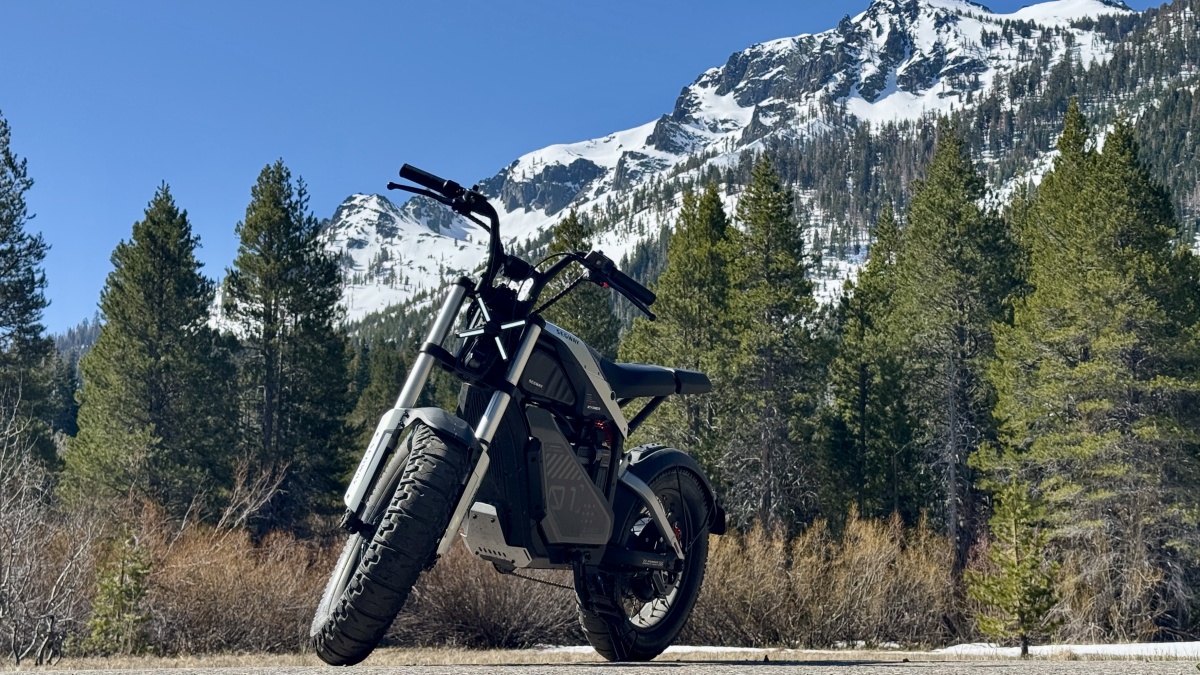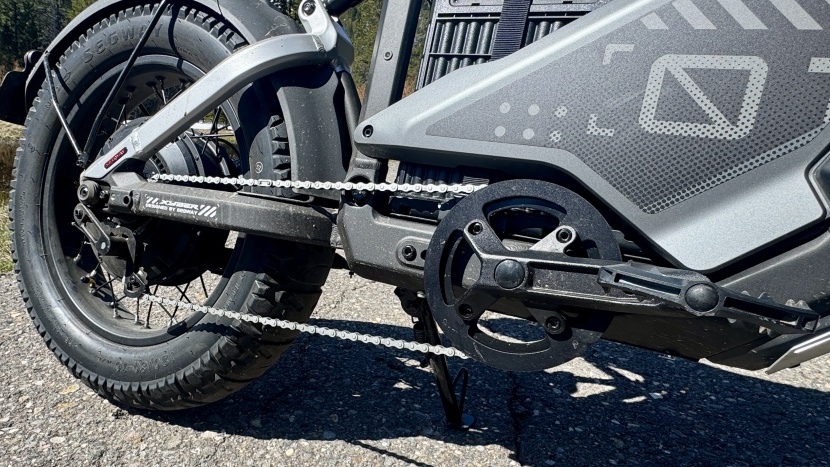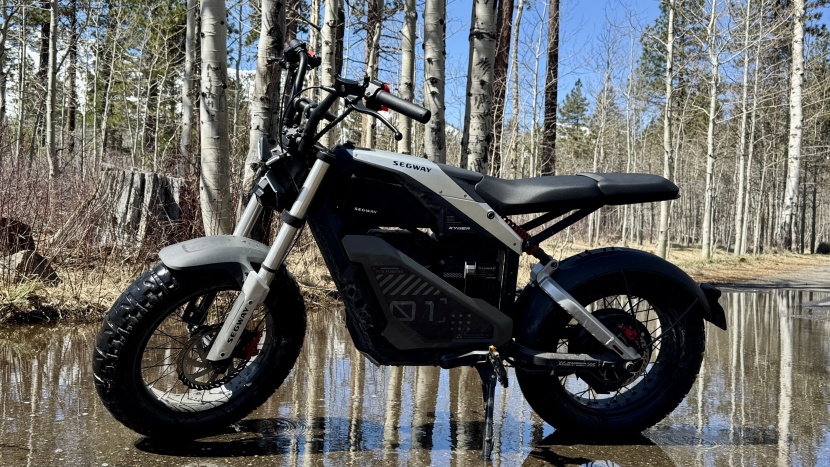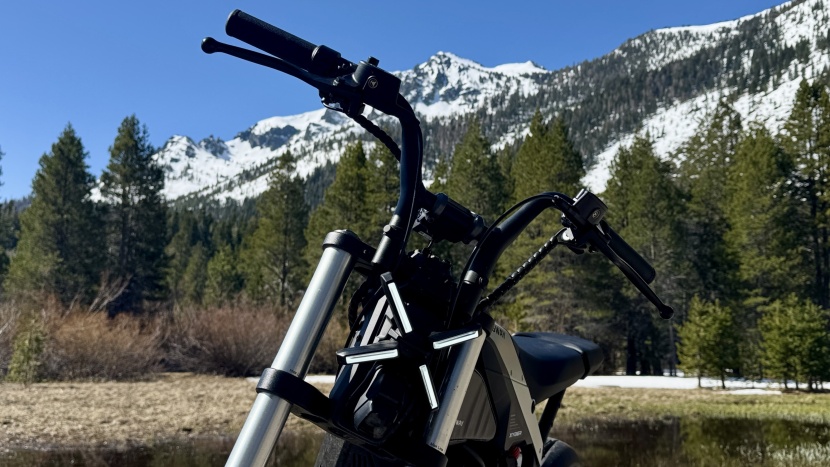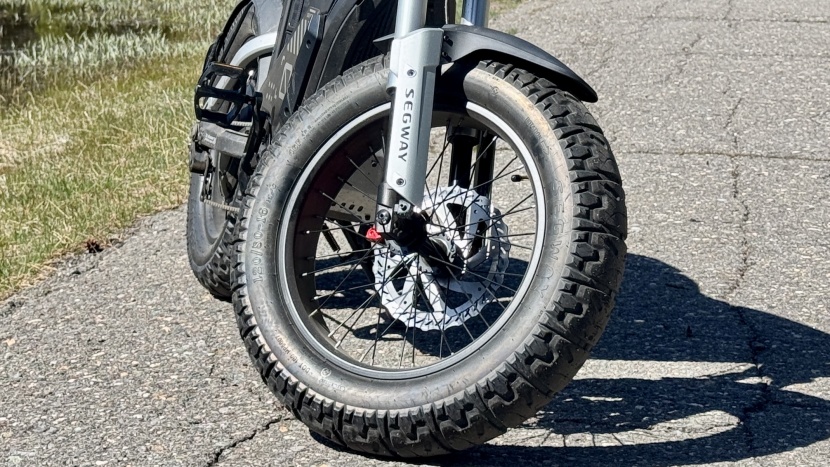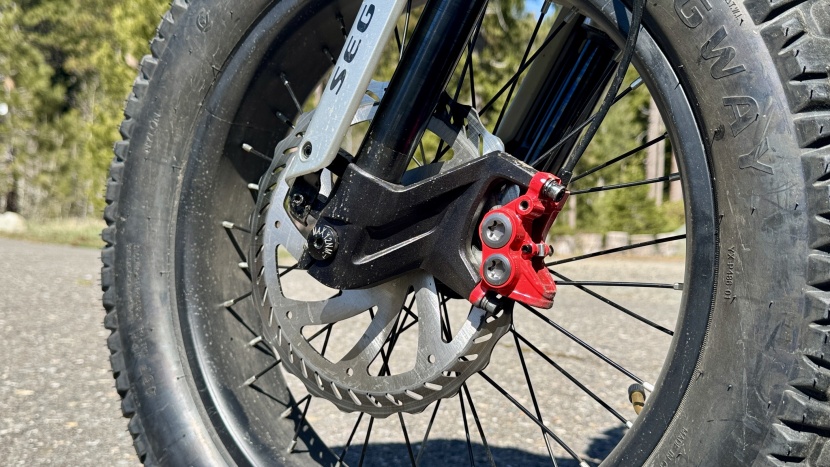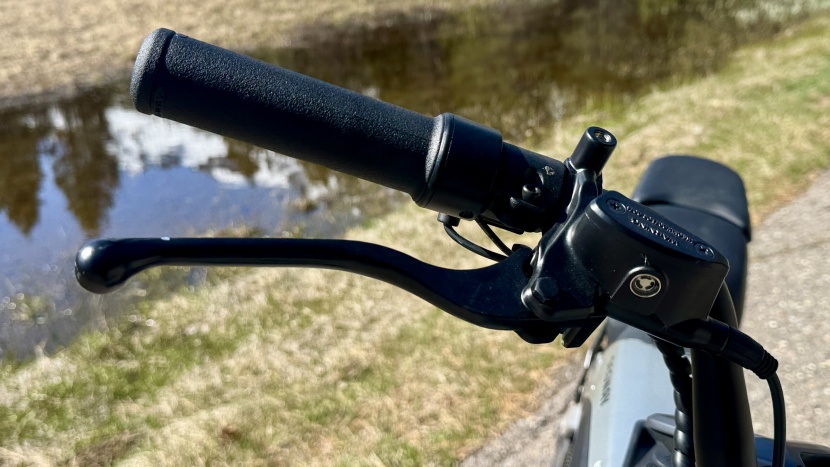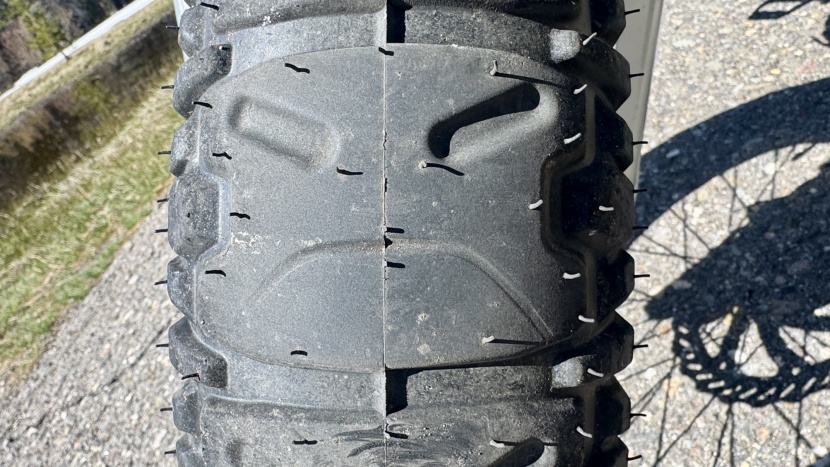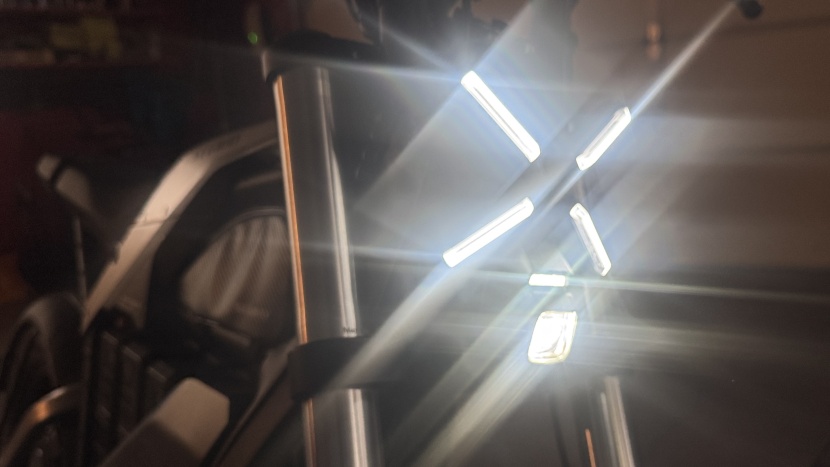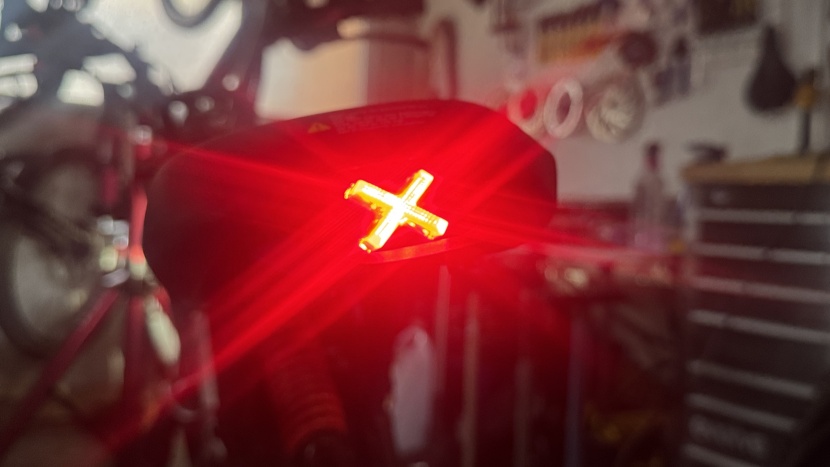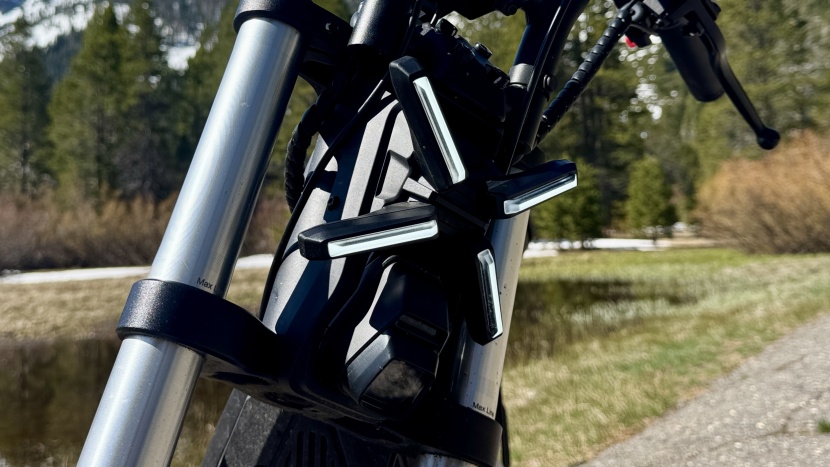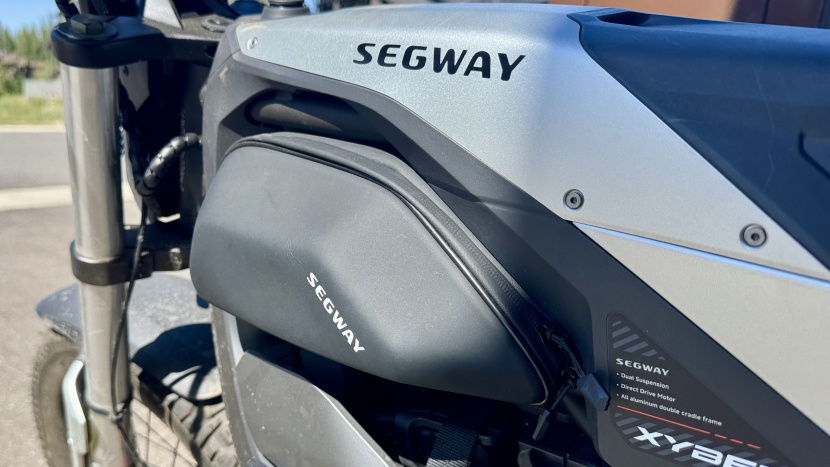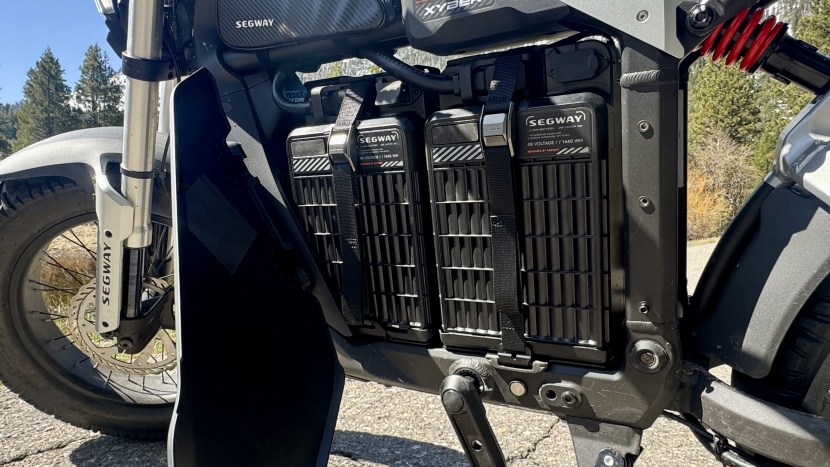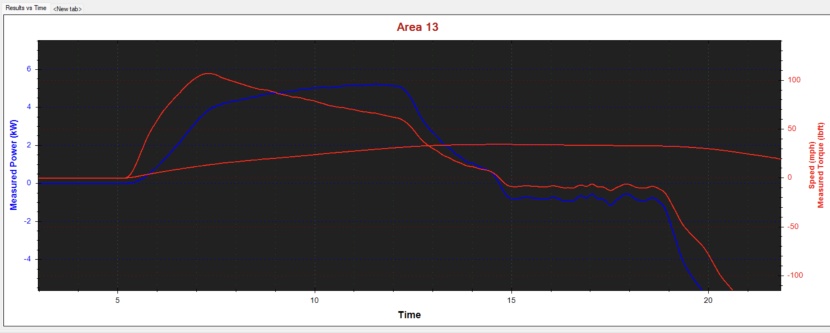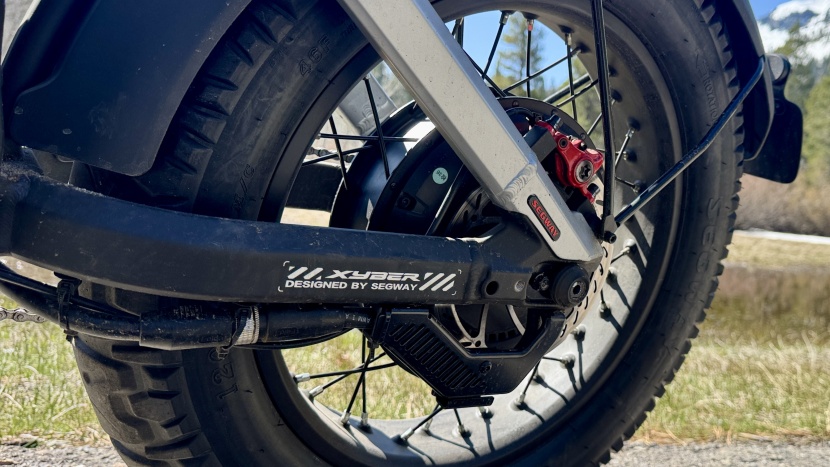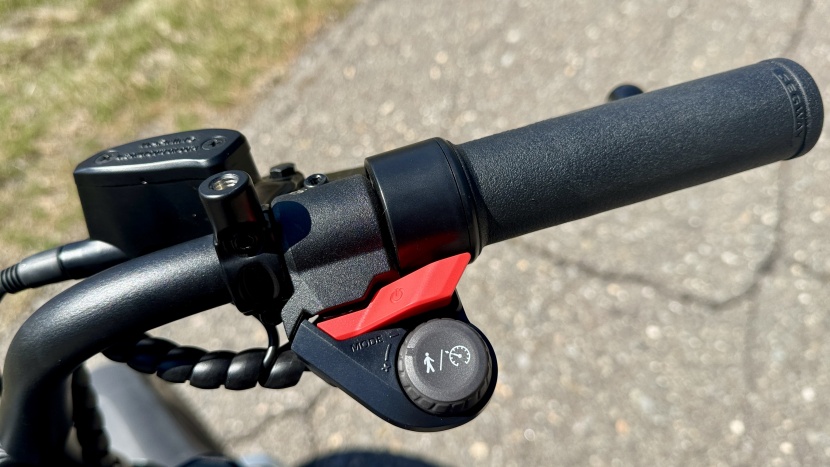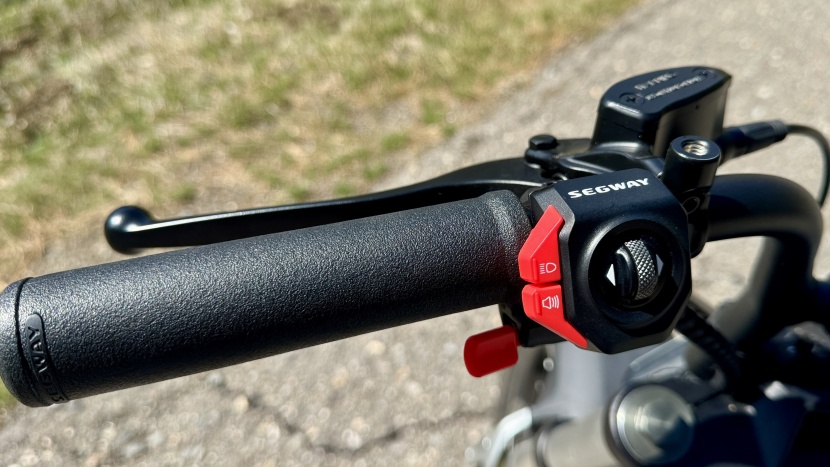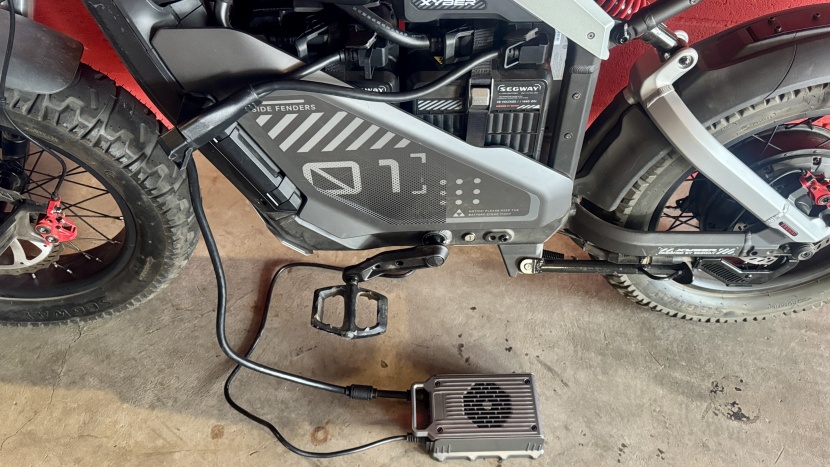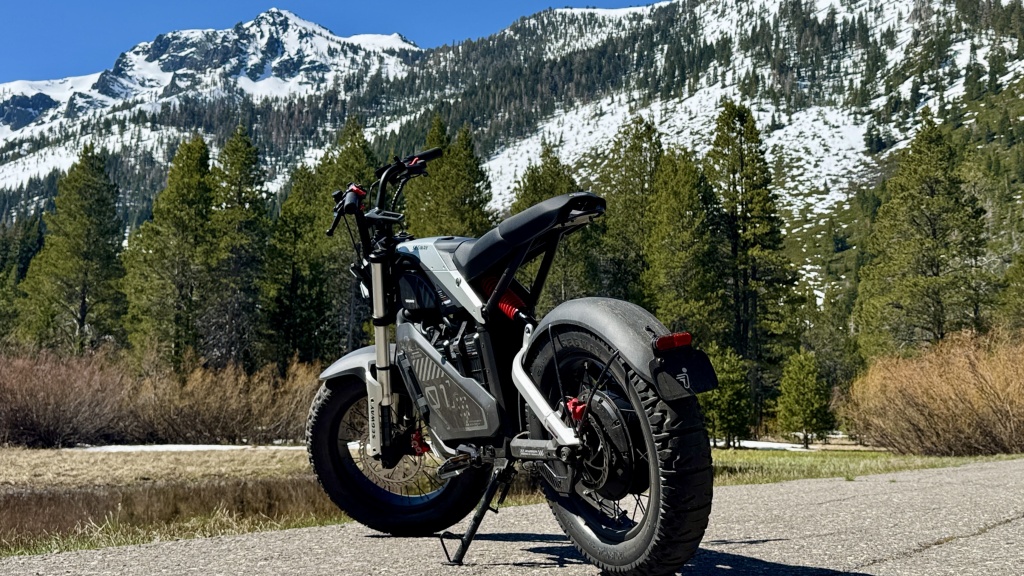
Our Verdict
Our Analysis and Test Results
The Segway Xyber is an absolute monster of an “e-bike”. At 138 pounds with 5" tires, it elicits comments like, “that ain't no bike!” and “oh my god, does that have pedals?” The reactions are warranted, and we tested the bike long enough to experience the full range of emotions that go along with its place in our transportation ecosystem. The Xyber is every bit as useful as the mopeds and scooters of yesteryear without the cost of registration and insurance. If you're looking for a convenient and quick electric vehicle that is easy to store, easier to park, and arguably easy on the wallet, the Xyber is an impressive offering from a company that knows a thing or two about micro-mobility.
Ride
We've reviewed other moped-style e-bikes that don't exactly fit the bike category, but the Xyber is probably the furthest from a bike that we've yet to ride. For the purposes of this article, we're calling it a bike and will be reviewing it as such. Shipped as a Class 2 electric bike, our Xyber arrived with a single battery, which limits not only its range but also its torque and acceleration. The 125mm crank arms are more like vestigial appendages, and while they connect to a working (single-speed) drivetrain, you won't likely be making any significant contribution to the bike's forward motion. You can use your legs to spin the cranks, but what you're really doing is controlling the motor through a cadence sensor and electronic relay. Having pedals to turn makes you feel less guilty when you're spotted on the bike path.
The ride quality of the Xyber is sublime. 5-inch wide tires, front and rear suspension, and a long, cushy seat give this bike incredible comfort regardless of what the roadway looks like. The handlebars have enough rise that your seated position is fairly upright with very little pressure on the hands and excellent visibility. The staggered position of your feet occasionally reminds you that it's possible to pedal, but it doesn't exactly feel natural on this shape of machine. That isn't to say that pedaling it is bad; it's just that a relatively low saddle height and big twist throttle distract you from the fact that it's an ebike. The bike uses a cadence sensor and a torque sensor that provide an exceptionally good pedaling experience, should you choose to turn the cranks. There is also a gyroscope built into the bike that informs the motor when you're riding on an incline.
Given your seated position, the single-speed drivetrain, and the bike's weight, you wouldn't imagine making much of a contribution to its velocity, and you're right, but that's not the whole story. On other moped-style ebikes we've tested, the motor seems to help your pedaling efforts, but on the Xyber, it feels like the power your legs put in gets multiplied and relayed to the motor without a real feel of resistance from the drivetrain. It's almost surreal how disconnected you feel from the chain drive. It's the most refined motor integration we've experienced.
Our Xyber test bike weighed in at 139 pounds before we added the second battery, pushing the scale up to 159 pounds. On the upside, this gives the bike a planted feel that isn't shaken by cracks in the pavement or rough roads. It's also incredibly stable at speed without a hint of speed wobble or susceptibility to cross winds. On the downside, you're hard pressed to pull the front end up over a curb, and should you choose to pedal the bike unassisted, it won't be for long. 100mm of rear suspension is paired with 110mm of front suspension to dampen all but the biggest bumps, and even when you encounter large potholes, the bike remains composed.
With the ability to hit high speeds comes the need to stop from those speeds, and Segway doesn't let us down here. Using a 220mm rotor upfront and a 180mm rotor in the rear, the quad piston front and dual piston rear hydraulic brakes are incredibly effective. At slower speeds, the brakes can almost feel too strong; they're grabby, and those not used to their power found themselves diving into the fork travel unintentionally. Using motorcycle brake levers, there is room for four fingers, but we never found the need to exert that much pressure on the system. The only real performance criticism of the bike we have is that the brakes don't offer much modulation for low-speed stopping. At higher speeds, they don't feel grabby at all and offer excellent stopping power, especially for a bike that weighs 159 pounds.
Segway uses its own custom 20 x 5" tires on the Xyber, and they're excellent for use on the road. The continuous center bead gives you a remarkably smooth and quiet ride. Leaning deep into corners always felt secure with plenty of grip for low-angle approaches. The tires are less impressive off-road; while they dampen shock well, the inverted tread is prone to slippage on softer surfaces and dirt. There were a few times that the bike couldn't make it up a steep dirt trail. There was plenty of power, but the tires couldn't find the necessary traction, and pushing the heavy bike really isn't an option.
The Xyber comes ready for urban duty with a powerful headlight that features a 1300-lumen high beam. The bike has an X-shaped taillight with a working brake light that is moderately bright but very small. Notably, there are no turn signals, nor is there a plug-and-play option to install them.
The bike uses quiet, polypropylene fenders on the front and rear; the rear is a two-piece fender, and removing the back half gives the bike a cafe racer vibe. Oddly, the back half of the rear fender has a license plate mount, but the Xyber is not a registerable vehicle. The Xyber has a bell and a horn, which are appropriate for different uses. The bell helped us fit in and seem civil while riding multi-use trails, while the horn was useful for getting the attention of drivers with their windows rolled up. A small void in the top of the frame is the perfect spot for stashing gear, and Segway offers two different bags that fit in the recess. These bags work great for carrying a lock, snack, or extra layer.
Range
The Xyber isn't even in the same class as the rest of the bikes we test when it comes to range. With the bike in its most powerful (Race) setting and equipped with two batteries, we rode 81.5 miles, covering over 5000 feet of elevation gain. The two batteries provide 2880Wh of power, while our 180-pound test rider did nothing but twist the throttle and take in the sights. Using a single battery, we managed to cover 44.3 miles on the same course, with notably less torque and acceleration. The bike is also 27 pounds lighter without the second battery, and that may have contributed to its exceptional single battery range.
The bike runs on a 48V system that never felt low on power. You can tell that the bike's speed is electronically limited to 35 mph in Race mode as it quickly surges to that speed with no sign of struggle, voltage sag, or resistance. This is, far and away, the longest range e-bike we've ever tested.
Segway gives a range estimate of 56 miles with one battery and 112 miles with two batteries, but their estimate assumes you're riding flat ground and may or may not be in the bike's most powerful setting. What our test results show is that this bike is at least as capable as what Segway claims. Had we been riding in Eco mode and kept a lower top speed on flat land, their range estimates might even be conservative.
Power
The Xyber is shipped as a Class 2 e-bike, giving it a top throttle-assisted speed of 20mph. Unlike most electric bikes, the performance changes with the addition of a second battery. With a single battery, the Xyber generated 99 Nm of torque at the wheel. With the addition of a second battery, the torque figure rose to 145 Nm and a staggering 5,230 watts of power. That's almost 7 horsepower and three times the amount of power as the next most powerful bike we've tested!
We performed several less technical assessments of the bike's power, and all of them were impressive. The bike's acceleration is praiseworthy. From a dead stop, the bike shot to 20mph in just 2.8 seconds. What this means for those riding in an urban environment is that when the light turns green, you'll be on the other side of the intersection long before most cars. Most electric bikes perform this test in closer to 10 seconds.
We performed a standardized hill test where we rode up a 9% grade and recorded the bike's maximum speed and the speed it slowed to at the steepest part of the road. In all of the years we've been performing this test on hundreds of e-bikes, these numbers have never been the same. The Xyber clocked 20mph and stayed at that speed throughout the hill; there was no hint of labor or struggle from the bike as it easily crested the ridge.
With the speed limit set at the maximum of 35 mph, the bike quickly reaches that speed and feels incredibly stable. The power to climb steep grades and accelerate quickly is readily available. You can ride the bike in Eco, Sport, or Race mode, and this setting dictates how responsive the throttle is. You can also adjust the level of pedal assist in each setting, with the lowest level allowing you to pretend to pedal. I write pretend because even in the lowest setting, the motion of your legs doesn't feel connected to the powertrain; it feels instead like you're pedaling a machine that relays information to a motor. It's a different feeling than we've had on other e-bikes. Testers remarked that it isn't a bad thing, it just feels so integrated that you don't feel like you're actually powering the bike.
Interface
When we talk about the interface, we're looking at how the rider interacts with the bike, particularly the electrified side. The screen, the controls, the battery, and the charger. In the case of the Xyber, we're also considering how the Segway app integrates with the bike's software and how easy it is to use. A full grip throttle on the right side of the handlebars hints that this machine wasn't made for pedaling. Using the scroll wheel on the left side of the handlebars, you can toggle through screens to access Navigation, take calls, and even control the music playing through your phone. Since the bike has no speaker, the last two features require using a Bluetooth speaker or headphones (which we don't recommend while riding).
The 2.25" center mount color display shows a wealth of information displayed in a clear, easy-to-read format. Your current speed is prominent by default, and each ride mode has a different screen color clearly indicating whether you're in ECO, SPORT, or RACE mode; each mode has four assist settings. You can independently adjust the four levels of assist in each ride mode, and the level that is shown at the bottom of the screen. Above your assist level is the battery's state of charge, and there are small icons to inform you of the status of the lights, Bluetooth, and Boost mode. Boost mode automatically provides up to 30 seconds of extra power when the battery has sufficient charge, after which the Boost function becomes unavailable for a few minutes.
When you deploy the bike's kickstand, it automatically puts the bike in Park mode. Once parked, you can use Air-Lockto lock the bike's display and prevent it from powering on without having your Bluetooth-linked phone nearby. The bike automatically detects your phone to unlock and locks when you walk away. You can also lock/unlock the bike by entering a code in the display or using a button in the app.
The amount of adjustability and customization available through the app is extensive. You can adjust the assist settings, cap the speed limit, set air-lock parameters, establish a passcode that locks the bike, tweak the sound and light settings, and even track the bike's location. If you want to loan the bike to a friend, you can send them a digital key that allows their phone to act as a key for the duration you specify. You can sound an alarm on the bike, and if it goes missing, you can report it through the app and lock the bike's functionality. If you input your destination in the app, you can get turn-by-turn directions on the screen. If you receive a call while riding, you get an alert on the screen, and you can use the handlebar controls to answer. The absence of a speaker makes this and control over your playlist seem like odd choices, but undoubtedly, some people will add a speaker to the bike or their helmet.
The enormous batteries are centrally mounted and easy to access for charging. They use a 10-amp charger that lets you charge quickly, but it isn't very portable. Getting this much juice into the batteries requires massive cables and directional plugs from a heavy, brick-like charging unit. When you have two batteries installed, each battery needs to be plugged in separately. A dual dongle cable is included with the second battery, allowing them to charge simultaneously.
Assembly
The Xyber is sold exclusively through Segway dealers, so unlike most of the bikes in our review, you don't have to open a crate and assemble it. Being sold through a dealer network means that you have a network of service providers, and you can test-ride the bike before purchasing it.
Should You Buy the Segway Xyber?
We loved riding the Xyber, and while we found it incredibly useful, that utility may partly be due to our testing locales. The Xyber is polarizing because it's so different from a bicycle that it seems to elicit the anti-ebike sentiment; it feels like it was made for boomers to shake a fist at. We'd suggest carefully analyzing how you want to use the bike and considering its logistics. It's really difficult to transport, even with a truck; hoisting it into the bed is a challenge. We've debated whether it's a good option for teens, and while “motorcycles are dangerous”, I'd rather have my child riding this than an electric dirt-bike that can easily be hacked to go much faster. Since the bike can be tracked with GPS and its speed limit can be set in the app, it may be a good option for a teen who doesn't have a driver's license or wants to avoid the high cost of owning a car.
What Other E-Bikes Should You Consider?
This is where I'm tempted to list off names like Ducati and BMW, but oh yeah, this is a bike. The Xyber doesn't feel like it has any comparable comparisons, but there are many moped-style bikes on the market. Our test team enjoyed the sportiness and convenience of the Ride1Up Revv 1. It's available in three configurations and is a total bargain. It doesn't have the capability or refined ride quality of the Xyber, but that didn't limit its utility. Our favorite Revv 1 model was the full-suspension, which offers a comfortable ride and a more robust powertrain. The hardtail model is a great value but uses a smaller battery that limits its torque and range. The DRT model has an off-road vibe but lacks the power to back up its aggressive looks.


